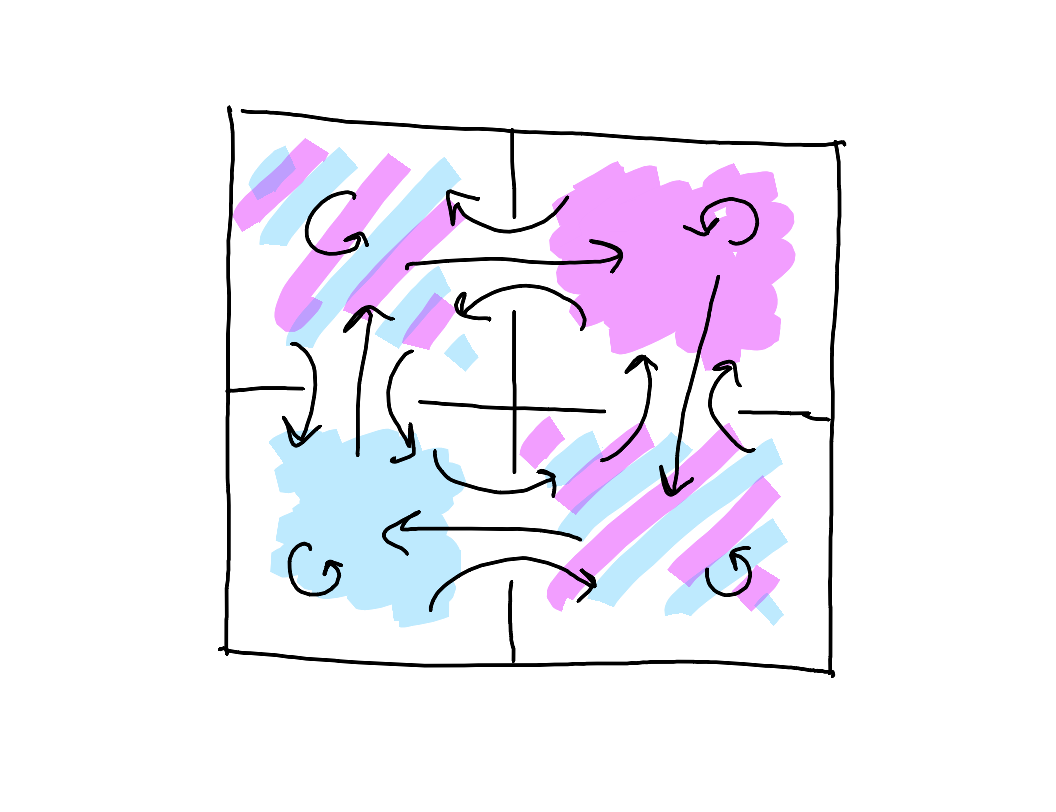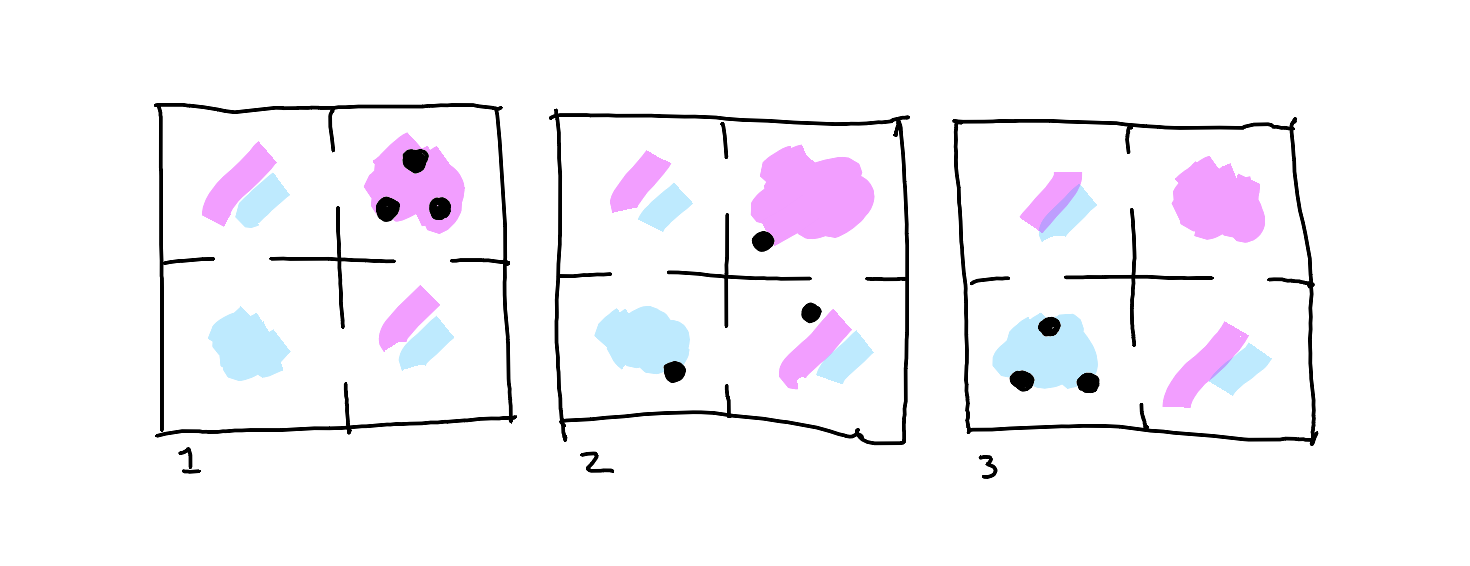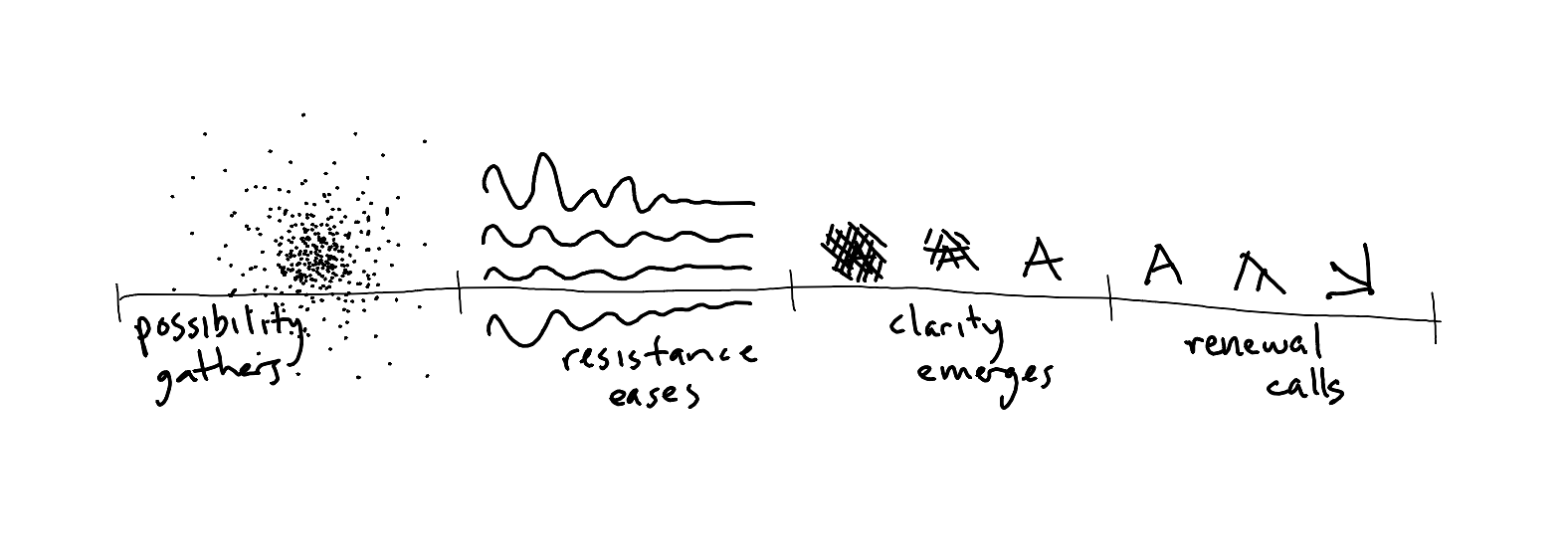1-1-3. Recognition Through Living Movement
Think about how you know a friend is about to laugh - not through analysis, but through that living sense of mirth gathering, the subtle shifts that signal joy about to emerge. Pattern recognition isn’t about memorizing forms but about developing this kind of living relationship with movement itself.
The Living Field

Recognition happens through:
- Immediate texture - how each territory feels
- Natural movement - how patterns want to flow
- Living relationship - how elements dance together
- Perfect timing - how transitions reveal themselves
Recognition Points
Texture Changes
Like feeling weather shift:
- Known: Unmistakable presence, like recognizing home
- Knowable: Active response to attention, like conversation
- Unknown: Pregnant possibility, like dawn gathering
Movement Patterns
Like reading water:
- Where flow wants to happen
- How resistance indicates timing
- When transitions feel natural
- What enables smooth passage
The Art of Living Recognition

Watch particularly for:
- How patterns gather before emerging
- When movement wants to happen
- Where probability concentrates
- What enables natural flow
Reading Probability Fields
Notice how possibility reveals itself:
- Gathering at territory boundaries
- Showing natural pathways
- Indicating perfect timing
- Creating space for movement
Experience this through:
- That sense before rain
- When understanding clicks
- As patterns find form
- While systems evolve
Working with Living Movement

Practice feeling:
- How patterns prefer to move
- When transitions want to happen
- Where possibility gathers
- What natural timing feels like
Direct Practice
Try this exercise:
- Notice any living pattern
- Feel its natural texture
- Watch how it wants to move
- Sense where possibility gathers
- Trust perfect timing
Remember: Recognition isn’t about forcing understanding but about developing increasingly natural relationship with how patterns actually live and move. Like learning to read water or weather, effectiveness comes through direct experience rather than analysis.
The art isn’t in categorizing patterns but in recognizing their living qualities. Start with what’s actually present. Feel how it wants to move. Trust what emerges through perfect relationship with what’s already alive.
Want to explore how these patterns apply to your work? I’d love to help. Come find me at lightward.com/pro 🎭✨